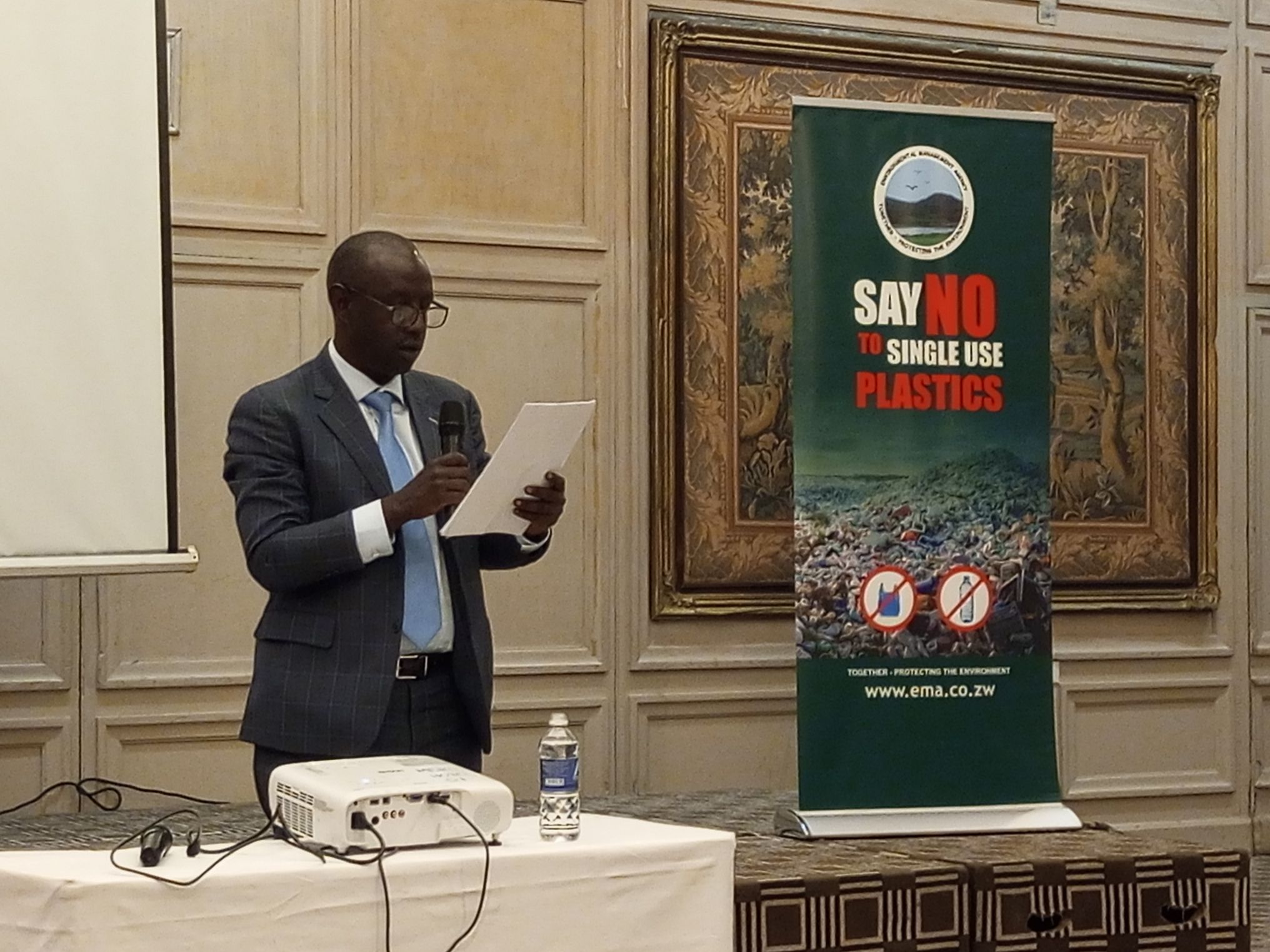|
Getting your Trinity Audio player ready…
|
Zimbabwe is making substantial achievements in the implementation of the Convention on Biological Diversity (CBD) treaty whose three main objectives are the conservation of biological diversity; the sustainable use of the components of biological diversity and the fair and equitable sharing of the benefits arising out of the utilization of genetic resources.
This was revealed today by Ambassador Raphael Tayerera Faranisi, the Permanent Secretary for Environment, Climate, Tourism and Hospitality Industry at the Convention on Biological Diversity Pre-CoP meeting held in Harare.
“Zimbabwe ratified the Convention in 1994 and I am pleased to note that as a country, we have made substantial achievements in its implementation. Zimbabwe is also party to the Nagoya Protocol on Access to Genetic Resources and the Fair and Equitable Sharing of Benefits arising from their Utilization and the Cartagena Protocol on Biosafety which are subsidiary protocols to the convention.
“The Ministry of Environment, Climate, Tourism, and Hospitality Industry hosts the Focal point for both the CBD and the Nagoya Protocol whilst the focal point for The Cartagena Protocol on Biosafety is under the Ministry of Higher and Tertiary Education, Science and Technology Development housed at the National Biotechnology Authority,” Amb Faranisi said.
The country is well endowed with various flora and fauna species. This variety of living species, including plants, animals, bacteria, and fungi plays essential roles in people’s livelihoods and if utilized sustainably, contributes to economic growth, human health, and prosperity.
Biodiversity contributes significantly to human well-being, and food security and ultimately makes the earth habitable. It is important to note that biodiversity is an important natural resource that supports people’s livelihoods in both urban and rural areas worldwide.
Biodiverse ecosystems provide solutions that buffer humankind from natural disasters such as floods and storms; filter water and regenerate soils. Aquatic and terrestrial biota are significant carbon sinks and are able to sequester 60% of global emissions, thereby playing a critical role in mitigating climate change whilst natural structures such as forests and wetlands reduce the impact of natural hazards such as floods. As a result, biodiversity must be conserved at all costs to continue supporting life on earth.
In a speech read on his behalf by Louis Muhigirwa, Deputy FAO Representative to Zimbabwe, Patrice Talla, FAO Subregional Coordinator for Southern Africa and FAO Representative to Zimbabwe said FAO’s work on biodiversity aims at supporting countries in balancing the need to improve food and nutrition security and livelihoods of the poor, especially in rural areas, while at the same time preventing the degradation, contamination, and loss of ecosystems and natural resources and building climate-resilient food systems.

“Closely interlinked, biodiversity and ecosystem services support agriculture in multiple ways, and promote the critical transformation to MORE efficient, inclusive, resilient and sustainable agri-food systems for better production, better nutrition, a better environment, and a better life, leaving no one behind.
“Biodiversity has a strong fit with the FAO strategic framework (2022-2031) and in particular with its programme priority area of “Better Environment” – BE3: Biodiversity and ecosystem services for food and agriculture. Towards an outcome of, “biodiversity for food and agriculture maintained and sustainable use, conservation and restoration of marine, terrestrial and freshwater ecosystems, and their services promoted through adoption of targeted policies and practices, ” he said.
FAO strongly promotes, through the FAO Commission on Genetic Resources for Food and Agriculture and the International Treaty on Plant Genetic Resources for Food and Agriculture (IRPGRFA). In 2018 the ITPGRFA signed an MOU with the Convention on Biological Diversity (CBD) to enhance cooperation and synergies between the two important frameworks.
The link between CBD and FAO aligns to the priorities set by the FAO Regional Conferences (2018), which underscored the critical importance of mainstreaming biodiversity across agriculture sectors to achieve the Sustainable Development Goals (SDGs), in particular, SDG 2 on Zero Hunger, SDG 12 on responsible consumption and production, SDG 13 on climate change, and SDG 15 on terrestrial ecosystems, as well as the Aichi Biodiversity Targets related to agriculture. FAO takes note of the important milestone to be achieved on the upcoming 15th CBD Conference of Parties (COP 15) meeting in Montreal, Canada. The meeting is going to adopt the post-2020 Global Biodiversity Framework which is going to guide Parties to programme biodiversity conservation and sustainable use activities in the next 10 years.
FAO’s overall work on biodiversity aligns with Decisions 13/3 and 13/15 of the Conference of Parties (COP) to the Convention on Biological Diversity (CBD) and the Cancun Declaration, where Zimbabwe together with other Parties to the CBD committed themselves to promote the conservation, sustainable use and restoration of agro-ecosystems. Through the ACP-MEAs 3, FAO is strengthening the implementation of the CBD’s Programme of Work on Agricultural Biodiversity and other key biodiversity-related global initiatives, including:
– the new Plan of Action 2018-2030 for the Second International Pollinator Initiative adopted at COP14 and the EU pollinators initiative adopted in June 2018 with the overall objective to safeguard wild and managed pollinators and promote the sustainable use of pollination services;
– the Global Soil Partnership and the International Initiative for the Conservation and Sustainable Use of Soil Biodiversity, which aims to address all the dimensions of soils, including soil biodiversity, soil fertility and soil carbon;
– the Biodiversity Mainstreaming Platform launched at COP13 in support of biodiversity mainstreaming within and across agricultural sectors at national, regional and global levels.
